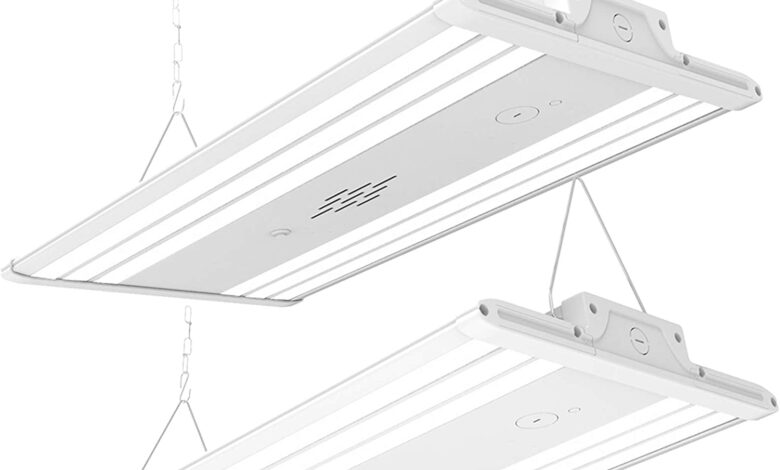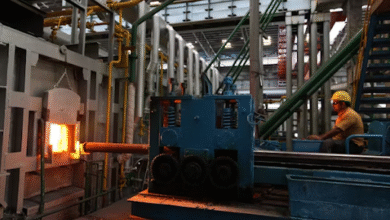Boost Warehouse Safety with High Bay LED Lighting

In today’s fast-paced warehouse environments, proper lighting isn’t just about visibility—it’s a matter of life and death. According to the Occupational Safety and Health Administration (OSHA), poor lighting contributes to approximately 5% of workplace accidents in warehouses, resulting in thousands of injuries annually. The impact extends beyond safety, with studies showing that inadequate illumination reduces worker productivity by up to 15% and increases error rates by 30%.
As warehouses evolve into 24/7 operations centers, the demand for reliable, consistent lighting has never been more critical. Traditional lighting systems, with their frequent maintenance requirements and inconsistent illumination patterns, are rapidly becoming obsolete. The emergence of high bay LED lights represents a revolutionary shift in warehouse safety and operational efficiency, offering superior visibility, reduced maintenance, and significant energy savings.
Modern LED high bay systems are transforming warehouse operations by eliminating common lighting-related hazards while providing a more sustainable and cost-effective solution for facility managers and safety officers.
The Critical Role of Lighting in Warehouse Safety
Poor warehouse lighting creates a cascade of safety risks that directly impact worker wellbeing and operational efficiency. When illumination falls below recommended levels of 300-500 lux for general warehouse areas, workers struggle to identify potential hazards like uneven surfaces, scattered materials, or moving equipment. Studies show that inadequate lighting increases slip-and-fall incidents by 60% compared to properly lit facilities.
Beyond immediate safety concerns, subpar lighting severely impacts worker productivity and accuracy. Research indicates that employees working under insufficient lighting experience 25% more eye strain and fatigue, leading to decreased concentration and slower reaction times. This fatigue compounds throughout shifts, with error rates climbing significantly during evening and night operations when natural light is absent.
Industry standards like OSHA’s 1926.56 and IES RP-7 establish minimum illumination requirements for different warehouse zones, from 108 lux in bulk storage areas to 538 lux in detailed assembly spaces. However, these standards represent bare minimums rather than optimal conditions. Progressive facilities are now implementing lighting systems that exceed these baselines by 20-30% to create safer, more productive work environments while still maintaining energy efficiency through advanced LED technology.
Why Traditional Lighting Endangers Warehouse Operations
Traditional metal halide and HID lighting systems pose significant operational risks in warehouse environments. These outdated fixtures suffer from rapid light degradation, losing up to 40% of their initial brightness within the first year of operation. The deterioration creates dangerous variations in illumination levels across work areas, with some zones falling well below OSHA’s minimum safety requirements.
The inherent design flaws of metal halide systems create problematic dark spots and shadows, particularly around shelving units and machinery. Their point-source lighting characteristic produces harsh, directional illumination that casts deep shadows behind objects and creates glare on reflective surfaces. This compromises depth perception and makes it difficult for workers to accurately judge distances and identify potential hazards.
From an operational standpoint, traditional lighting systems drain resources through excessive energy consumption and maintenance demands. Metal halide fixtures typically consume 400-1000 watts per unit while delivering only 65-75 lumens per watt, compared to modern LED systems that achieve 140-160 lumens per watt at half the power draw. The frequent bulb replacements, ballast repairs, and system downtime associated with traditional lighting not only increase operational costs but also create additional safety risks during maintenance procedures at height.
LED High Bays: Safety Features That Protect Your Workforce
Eliminating Hazardous Shadows and Dark Zones
Modern LED high bay fixtures revolutionize warehouse safety through advanced 360-degree light distribution technology. Leading manufacturers like Hyperlite utilize precision-engineered optical arrays that spread illumination evenly across large spaces. This comprehensive coverage eliminates dangerous shadows between racks and around corners where accidents commonly occur. The fixtures’ multi-point LED arrays work in concert with specialized diffusion lenses to create overlapping light patterns, ensuring consistent illumination levels from floor to ceiling.
High Color Rendering Index (CRI) for Visual Clarity
The superior Color Rendering Index (CRI) of LED high bays, typically 80+ compared to metal halide’s 65, dramatically improves workplace safety through enhanced visual accuracy. This higher CRI enables workers to distinguish subtle color differences in safety markings, warning labels, and inventory codes with greater precision. When viewing objects under LED lighting, employees can better identify potential hazards, such as liquid spills or damaged materials, thanks to the light’s ability to render colors naturally and vividly. Studies show that facilities upgrading to high-CRI LED lighting report up to 30% reduction in picking errors and significantly improved response times to safety incidents. The consistent color temperature throughout the LED’s lifespan maintains this visual clarity, unlike traditional bulbs that shift in color output as they age, compromising safety-critical color recognition.
Selecting Optimal LED High Bays for Warehouse Safety
Proper LED high bay selection begins with understanding lumens-per-watt requirements across varying ceiling heights. For facilities with 20-25 foot ceilings, fixtures delivering 18,000-25,000 lumens at 140-160 lumens per watt ensure adequate illumination without energy waste. Taller spaces of 30-40 feet require higher output fixtures ranging from 30,000-45,000 lumens while maintaining efficiency ratios above 140 lumens per watt.
Environmental protection ratings prove crucial for long-term safety performance. LED high bays should carry minimum IP65 ratings for dust-tight operation and water resistance, particularly in facilities with exposure to airborne particles or high humidity. In cold storage areas or facilities with frequent temperature fluctuations, fixtures rated for -40°F to 140°F prevent condensation issues and ensure consistent operation.
Color temperature selection directly impacts worker alertness and safety. While warmer options around 3000K create a comfortable atmosphere, warehouse operations benefit most from 4000K-5000K temperatures that closely match natural daylight. This range optimizes visual acuity for reading labels, spotting hazards, and maintaining circadian rhythms during extended shifts. The key is selecting fixtures that maintain consistent color temperature throughout their operational life to prevent visual confusion and maintain safety standards.
Implementation Guide: Transitioning to Safety-Focused Lighting
A successful transition to LED high bay lighting begins with a comprehensive lighting audit. Safety officers should measure current illumination levels across all work zones using calibrated light meters, identifying areas that fall below OSHA standards. Document shadow patterns, glare points, and accident-prone zones to create a baseline assessment. This data helps determine optimal fixture placement and quantity requirements.
Strategic fixture placement focuses on eliminating shadows and maintaining consistent light levels. Position LED high bays in a grid pattern with 30-40% overlap in light distribution patterns. Critical work areas like picking zones and loading docks require tighter spacing at 1.2-1.5 times mounting height, while storage aisles can use wider 1.5-1.8 times mounting height spacing. Install supplementary task lighting at workstations requiring detailed visual tasks.
During installation, ensure mounting heights account for overhead obstacles and maintain minimum clearances from sprinkler systems. Use safety-rated mounting hardware and secure power connections with proper strain relief. Implement controls zoning to match operational patterns, with motion sensors in low-traffic areas and daylight harvesting near windows. Finally, establish quarterly maintenance protocols including fixture cleaning, light level verification, and control system testing to sustain optimal safety performance.
Maximizing Warehouse Safety Through Advanced LED Technology
The transition to LED high bay lighting represents a crucial step forward in warehouse safety and operational excellence. By addressing the fundamental challenges of traditional lighting systems—including inconsistent illumination, dangerous shadows, and poor color rendering—LED technology creates measurably safer work environments. The implementation of modern LED high bays has demonstrated up to 60% reduction in lighting-related accidents and a 30% improvement in worker productivity across warehouse operations.
Beyond the paramount safety benefits, facilities upgrading to LED high bays typically realize 65-75% reduction in lighting energy costs and virtually eliminate maintenance-related downtime. The long-term reliability of LED systems, with 50,000+ hour lifespans, ensures consistent safety performance while delivering substantial operational savings. These benefits combine to create a compelling case for warehouse modernization through advanced lighting technology.
Don’t let outdated lighting compromise your facility’s safety standards. Schedule a professional lighting assessment today to identify potential hazards and develop a customized LED high bay implementation plan that protects your most valuable asset—your workforce.




